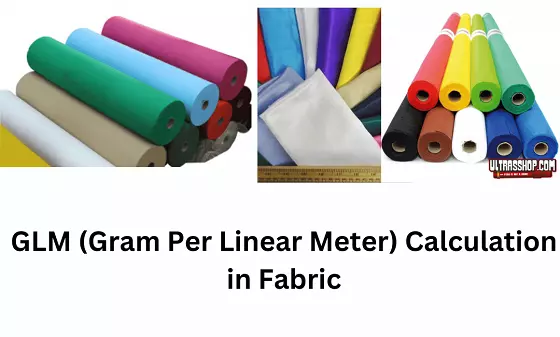GLM (Gram Per Linear Meter) Calculation in Fabric
In the textile industry, grams per linear meter (g/m) is a widely utilized unit of measurement to measure the density and weight of a fabric. This particular unit expresses the heaviness of the fabric per meter length, usually determined in meters. In this article, we discussed GLM (Gram Per Linear Meter) Calculation in Fabric.
Knowing the g/m is essential in establishing the sturdiness, strength, and endurance of the fabric and it is utilized by fabric makers and designers to secure the dependability of their materials. Comprehending g/m can also be of use for fabric modders who are looking to make customized textures that correctly mirror the weight and feel of various fabric types. In this regard, it is necessary to understand how g/m is calculated and how it can be applied to fabricate more authentic or tailored textures.
What is Grams per Linear Meter In Fabric?
The gram per linear meter (g/m) in fabric is a unit of measurement used to describe the weight or density of a textile fabric. It indicates the weight per unit length of the fabric, usually measured in meters.

How to Calculate Linear Meter?
If a fabric weighs 100 g/meter, it means that one meter of fabric weighs 100 grams. This unit of measurement is commonly used in the textile industry to determine the quality and characteristics of fabric.
In the context of clothing, this unit of measurement can be used to describe the weight or density of various types of fabric used in clothing, home decor, or other textile products. It can also be used in the development and testing of fabric mods that incorporate custom textile materials or textures. Let’s discuss GLM (Gram Per Linear Meter) Calculation in Fabric below.
How To Find Grams per Linear Meter?
To find the grams per linear meter (g/m) of fabric, you will need a scale and a ruler or measuring tape.
Here are the steps to follow:
- Cut a strip of fabric: Cut a strip of fabric that is one meter long and at least 10 cm wide.
- Weigh the fabric: Weigh the strip of fabric using a scale that measures in grams. Be sure to remove any excess threads or debris from the fabric before weighing.
- Calculate grams/meter: Divide the weight of the fabric (in grams) by the length of the fabric (in meters). The resulting number is the grams per linear meter (g/m) of the fabric.
The formula to calculate grams per linear meter (g/m) is: g/m = (Weight of the fabric in grams) / (Length of the fabric in meters)
Simply divide the weight of the fabric by the length in meters, and you’ll get the grams per linear meter of the fabric.
For Example:-If you have a strip of fabric that is 1 meter long and weighs 100 grams, the g/m would be 100 g/m (100 grams divided by 1 meter).
Important Points: Note that the g/m measurement can vary depending on fabric type and weave or knit structure. It is important to follow industry standards and guidelines when measuring the g/m of fabrics to ensure accurate and consistent results.
Conclusion
GLM (Gram Per Linear Meter) Calculation in Fabric Metric weight per unit length, otherwise known as Gram per Linear Metre (g/m), is a method of measurement that is employed frequently in the textile industry to appraise the density or weight of a particular fabric. Commonly, this is done by weighing the fabric in meters. The utilization of g/m is imperative in the manufacturing of textiles since it enables an understanding of the quality, strength, and durability of the fabric.
Furthermore, this technique can be employed to select fabrics with similar properties. By using g/m precisely, producers of textiles and designers can ensure the quality of their products is uniform and present their clients with fabrics of the highest caliber. In the sphere of Fabric Modding, a comprehension of g/m is advantageous when attempting to produce textures that realistically emulate the feel and weight of various fabric types.
- You may love to read: Calculate Fabric GSM by GSM cutter
- What Is GSM In Fabric? Meaning of GSM in Fabric
